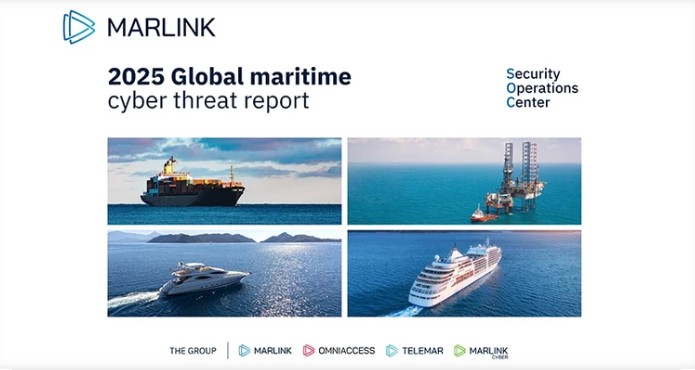Marlink, a leader in managed services for business-critical IT solutions, has published its latest Security Operations Centre (SOC) report.
The report finds that cybercriminals targeting maritime have streamlined their tactics, enhanced their operational efficiency and adopted emerging technologies to expand their attack capabilities.
In the six months to December 2024, Marlink’s global network of SOCs monitored 1,998 merchant and leisure vessels, and recorded:
One of the most significant developments has been an increase in the adoption of generative artificial intelligence (genAI). Off-the-shelf large language models (LLMs) have become a critical tool for hackers, allowing them to accelerate malware development, automate phishing campaigns and refine social engineering tactics.
This has led to a surge in AI-assisted cyberattacks. Some actors have leveraged genAI to assist in developing malicious scripts and exploits designed to specifically target CVEs (known cyber security vulnerabilities).
The cybercriminal ecosystem has become more organised, with access brokers thriving. The sale of network access has doubled in the past year, as cybercriminals increasingly turned to access broker services to gain entry into corporate environments.
The increasing complexity of these cyber threats reinforces the urgent need for stronger security postures and improved cyber hygiene. Marlink operates a global network of Security Operations Centres for both IT and OT solutions through its dedicated Marlink Cyber operation.
Nicolas Furgé, President, Marlink Cyber, said: “H2 2024 saw a marked evolution in cyber threats, as malicious actors adopted increasingly efficient, structured, and business-like approaches to cybercrime, putting additional pressure on the maritime industry. Looking ahead to 2025, the cyber security landscape is expected to become increasingly complex and challenging, increasing the pressure on users to improve protection of assets and people.”
Read the report: marlink.com/cyber-threat-report-h2-2024/

